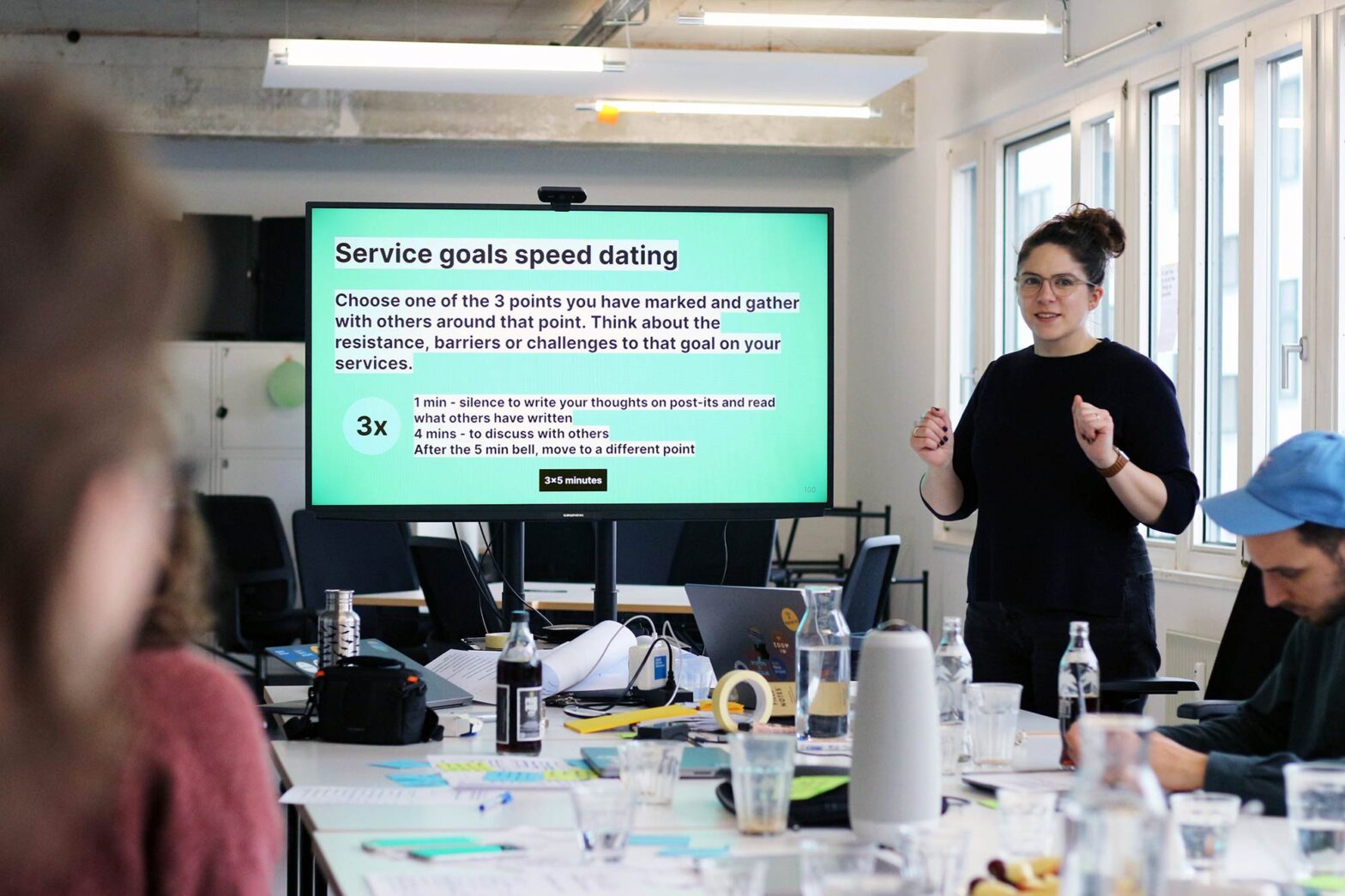We ran a version of the ‘Introduction to Service Design’ training at Digital Service for the second time. Again, a dozen people from all digital disciplines participated: designers, product managers, transformation managers and software engineers.
My colleague Sabrina did an outstanding job at co-running it with me. She elaborated on various aspects and extended the content well beyond the prepared training material. The training went flawlessly and smoothly. A slightly smaller group of participants allowed us to have longer and deeper discussions. That became later visible in the feedback. One person suggested this training should be part of the onboarding for everyone at DigitalService.
On Wednesday, Nadine and I ran the latest edition of our 1-hour accessibility introduction, which is indeed mandatory for all new starters. Nadine took the time to restructure it quite significantly. The training flows much better now. It starts more interactive and goes into fewer technical details. The latest iteration now puts a stronger emphasis on active learning, which could still be intensified.
Friday afternoon was the time for some learning. Christin organised a demo of the AI tool SUMM. A young team from Munich developed it and promises to generate easy-read texts from complex and complicated texts like government-speak legalese. Various German local government and public sector organisations have already integrated it into their workflow. For example, Hamburg uses it for the quick production of any easy-read version of texts on their website. We wanted to understand how it would help us in our work when breaking down administrative legal language into plain language for the digital services we are developing.
What we saw was pretty impressive. The live demo of their tool took long sentences apart, explained their elements bit by bit and added further context, like what ‘non-constitutional’ means. While the direct outputs aren’t precisely what we need, they could help us break things down and support the content design process. In the coming days, designers will take a closer look with a test account they offer.
Addressing things at a higher level
The working group around a design system for the German public sector is meeting again. After a reset and branding exercise, they kicked things off for the new year under the label ‘KERN’, German for ‘core’ and also ‘pit’ or ‘pip’. The community call was interactive, and people from various public sector organisations joined. Few things are set in stone, so there seems to be a lot of space for community members to shape, which seems like the right approach. The community get-togethers will continue every fortnight. I’ll be back next time.
On Friday, Sarah and I met to outline a blog post about her work on the identity card PIN letter. It is sent to everyone in Germany who receives a new identity card as a German citizen, EU citizen or non-EU resident. Sarah and AC did most of the work on the letter over a year ago, but only recently, the redesigned version went into print at the Federal printing office.
It was not the kind of work they wanted to do in the first place. They decided to fix the letter while working on a new digital identity app. When analysing people’s journeys, the letter stood out as a significant pain point or often even a failure point. Having this somewhat unexpected work written up will be useful. It will be a vital blog post about cross-channel design, working within constraints, and the persistence needed in the public sector. I want to tie this blog post to another one in the works: about service thinking while working with a product lens.
By the end of the working week, I got interested in a service page launched for applying for one-off financial support for students. People from the civic tech community mocked it, created phishing-like duplicates, and questioned its exclusive use of a Federal government account. The service uses a regular .de top-level domain, including numbers, referring to the amount of the one-off payout. So people created almost identical-looking pages by changing the numbers. While launched by a Federal minister as a national service, it doesn’t utilise the Federal government style guide. Instead, the agency behind it created an independent campaign-like brand.
All of that isn’t generating trust with users. So in a series of tweets, I made 3 practical suggestions on how to improve the service before it launches in full:
- Put the service on a Federal-level government domain like service.bund.de
- Use the Federal government style guide’s colours, fonts, components and patterns
- Indicate how people know they trust a service like this one – via a slim top bar similar to how it’s used on distributed services run by the US government and the European Union
It’s always easy to shout from the sidelines. But these suggestions are apparent and widely used practices elsewhere. Moreover, an updated version of the German government’s Service Standard could encode them and help make them common practice. Possibly I can tie some of those into the objective work related to the Service Standard.
What’s next
Next week, we’ll have an international call on ‘working in the open’. I’ll team up with my colleague Pamela, our Head of Comms, to share our beliefs, approach, and what we practically do at the Digital Service.
We have had no international calls in over 6 months, so we might need to shout a bit louder to get enough people in the Zoom room again. Having ex-UK gov comms maestro Giles Turnbull as the other presenter will surely help get people’s attention, or so I hope.

